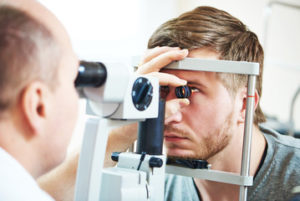To Dilate or Not to Dilate?

What Exactly Happens during Dilation?
If you've never had your eyes dilated, the mere idea of having eye drops placed into your eyes could feel slightly unsettling. Sometimes, a slight stinging sensation may occur after drops are inserted. This may feel similar to when you have gone swimming without goggles. About twenty minutes after we insert the eye drops, your pupils will be fully dilated, opened wide for us to see the structures at the back of the eye.
Why we want to see these Structures
The reason that we conduct dilated eye exams is to facilitate the earliest detection of potentially serious eye conditions. These include:
- Diabetic retinopathy. This condition effects the blood vessels at the back of the eye, where the retina sits. When the eyes are dilated, we can observe slight swelling or leakage from these vessels.
- The optic nerve fibers are involved in this common condition, and we best see the "insertion point" of these nerves when the eyes are dilated.
- Age-related macular degeneration. The macula is best observed behind dilated pupils, enabling us to visualize slight clumping of pigment, or yellowish deposits that alert us to unwanted changes in this part of the eye.
Tips for your Visit
Because treated pupils will gradually return to normal, it may take some time for you to overcome the blur of dilation. Your eyes may be more sensitive to light than normal. You may receive throw-away sunglasses to wear for a few hours. While these eyeglasses are not fashionable, you will want to wear them. Some patients wear them beneath their normal sunglasses in order to further improve comfort until pupil size decreases.
Do you have questions about your eye health? Contact Eye Institute of Houston at (713) 668-7337.
Category:

 CONNECT
CONNECT
Leave a Reply